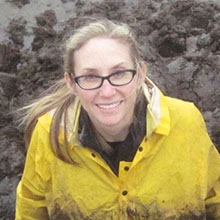Recurrence of Earthquakes and Tsunamis
This research focuses on revisiting previously studied paleoseismic sites and applying modern geochronology methods to obtain higher-precision dating of past earthquakes and tsunamis. The Cascadia subduction zone has a wealth of geologic evidence of past earthquakes and tsunamis. Since the 1980s dozens of field sites from Northern California to Vancouver Island have been studied. Many previously studied sites are now being revisited to collect high-quality geochronological data* and apply modern methods and analyses to constrain spatial and temporal characteristics of rupture, deformation, and tsunami inundation for Cascadia and upper plate fault earthquakes.
f.a.q.
You have questions. wE have answers.
After all, asking questions is the first step in the scientific method.
Improved earthquake and tsunami recurrence intervals will inform probabilistic earthquake and tsunami hazard models and lead to better hazard assessments. Communities will benefit from these updated assessments and tools for their risk assessment, planning, and resilience efforts.
Geochronological data refers to information used to determine the ages of geological materials such as rocks, minerals, and fossils. This data helps researchers understand past earthquakes and tsunamis.
This work complements ongoing paleoseismology studies by two large, USGS-led multi- disciplinary projects focused on Cascadia earthquake recurrence, and by the NSF-supported Cascadia Region Earthquake Science Center.

